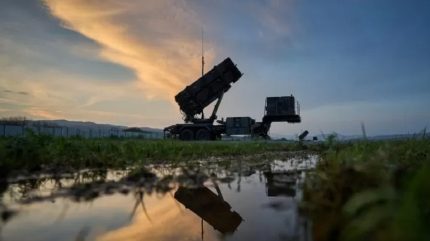
One of four Dutch MIM-104 Patriot surface-to-air missile defence systems will be deployed to Lithuania for an exercise lasting a few weeks in the summer of 2024 under the auspices of Nato’s Rotational Air Defence Model.
The intention behind the exercise is to train no-notice redeployment of air defence units and systems and integrate them smoothly for air defence tasks.
Kajsa Ollongren, the Dutch Defence Minister, relayed her nation’s commitment to Baltic security in a press release: “It is an important signal to our eastern allies: you can rely on the Netherlands including concerning air defence.”
Notably, there has been ongoing concern that Nato allies were dragging their heels when it came to sending air defence systems to the Baltic region, despite pledging to do so under the Rotational Air Defence Model, established at the alliance’s Vilnius summit in July 2023.
Since then, the former Lithuanian Minister of National Defence, Arvydas Anušauskas, had urged Nato to quicken the pace – emphasising the Model’s importance to Lithuania given that the country cannot afford such systems on its own.
GlobalData intelligence indicates that Lithuania’s defence budget grew by 16.2% between 2020 and 2024, and it is set to inflate again from $2.1bn this year to $2.8bn in 2029. According to the Washington-based think tank, the Center for Strategic and International Studies, the Patriot is by far the most expensive single weapon system that the US has supplied to Ukraine. “The total cost is probably around $1.1bn: $400m for the system and $690m for missiles.”
Despite the six months of inactivity when it came to air defence, the Netherlands has provided substantial support to the Baltic republic in other areas. These include Nato Air Policing in the region since 2005; they provided two officer positions at the Nato Force Integration Unit Vilnius; and they co-ordinate the project on military mobility, which Lithuania takes part in and adheres to the EU CRRT and Mutual Assistance in Cyber Security project coordinated by Lithuania.
In January 2024, the Dutch also joined a critical logistics programme alongside Germany and Poland, in which the three nations opened up a military corridor from west to east across their respective territories to streamline the deployment of troops and assets without bureaucratic challenges.
Since the annexation of Crimea by Russia in 2014, which violated international law, Nato has continued to increase its troop presence in Eastern Europe as a deterrent. When exercises and operations in the event of threats occur, reinforcements and assets such as the Patriot must reach the eastern flank quickly.




